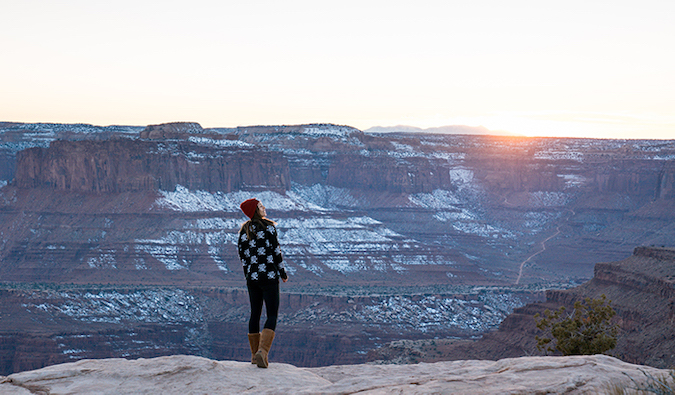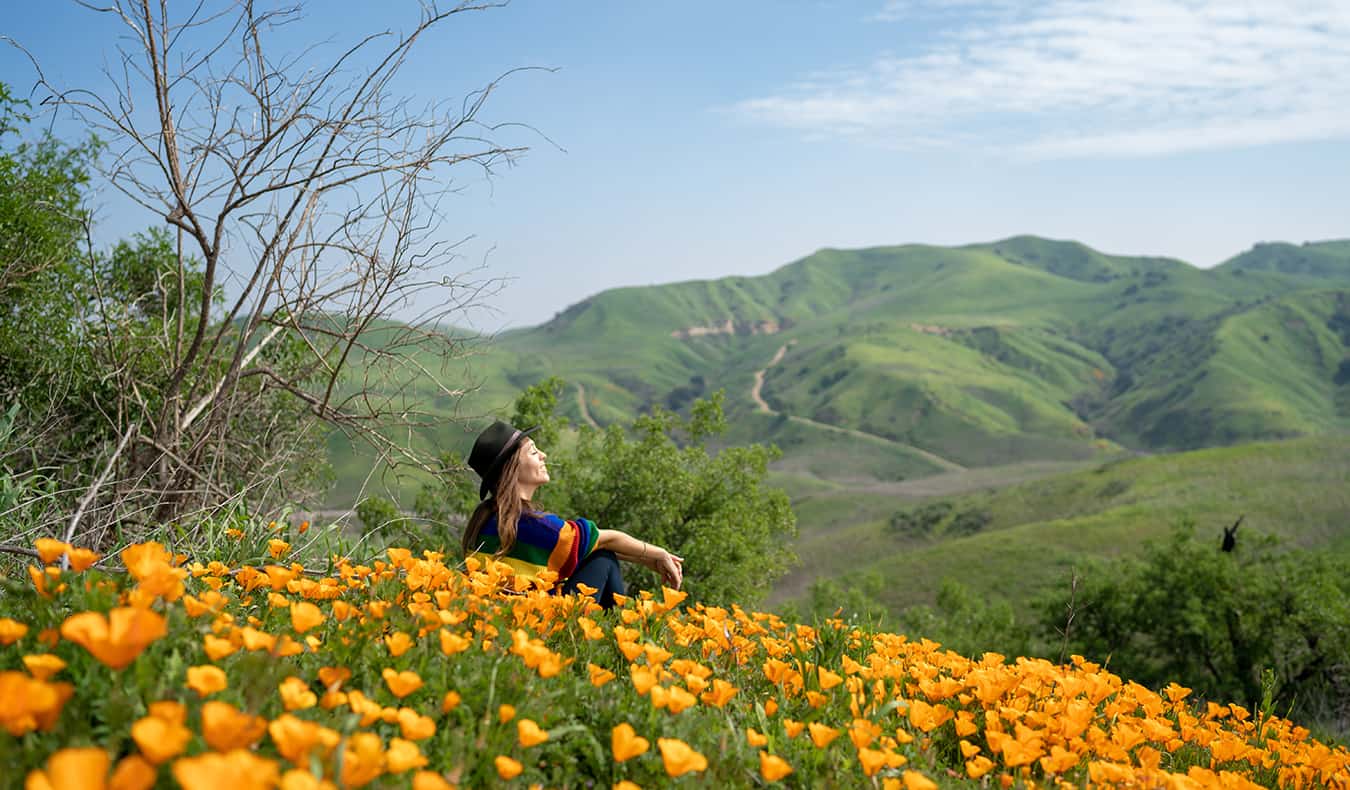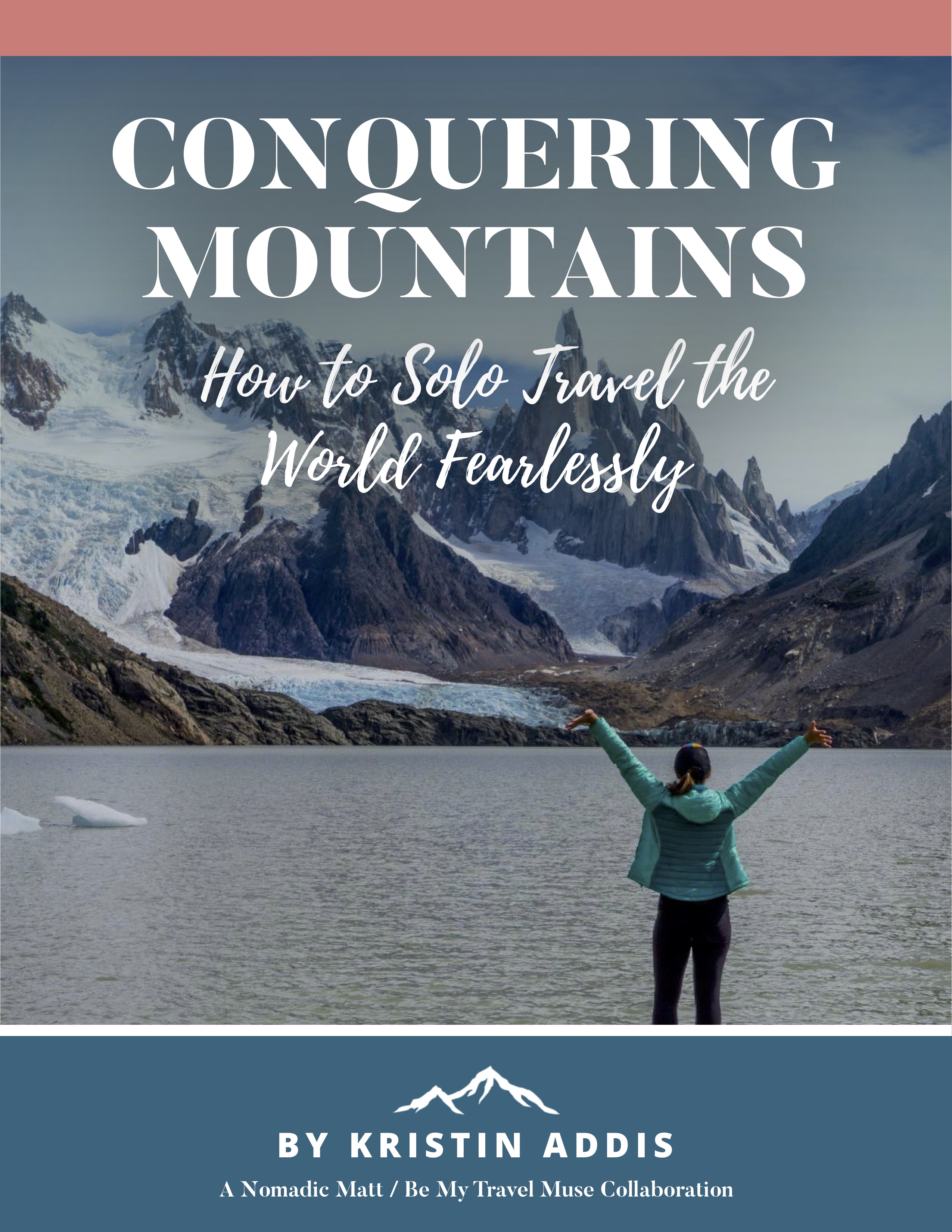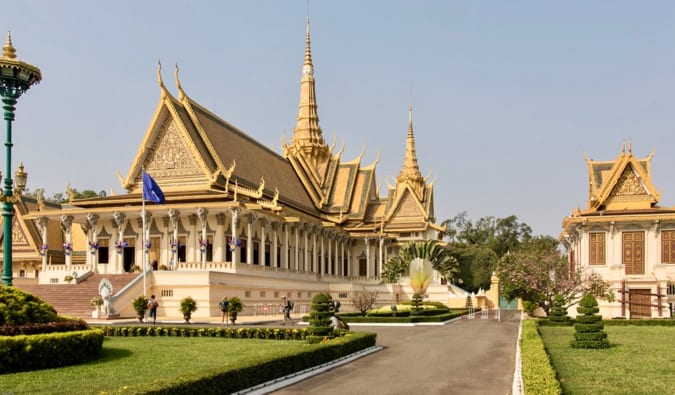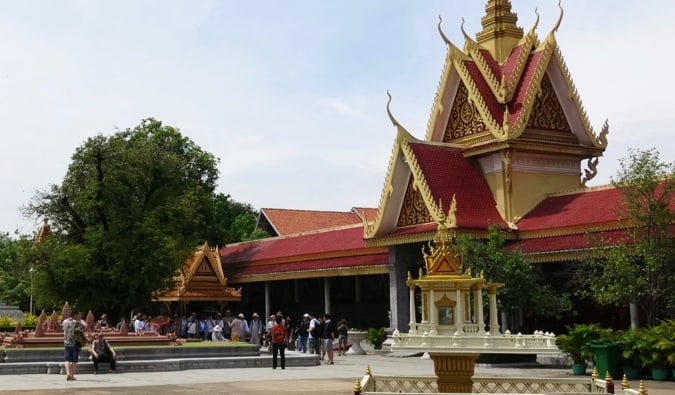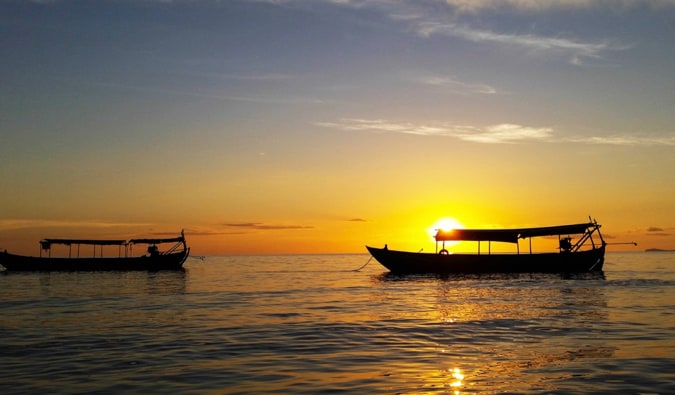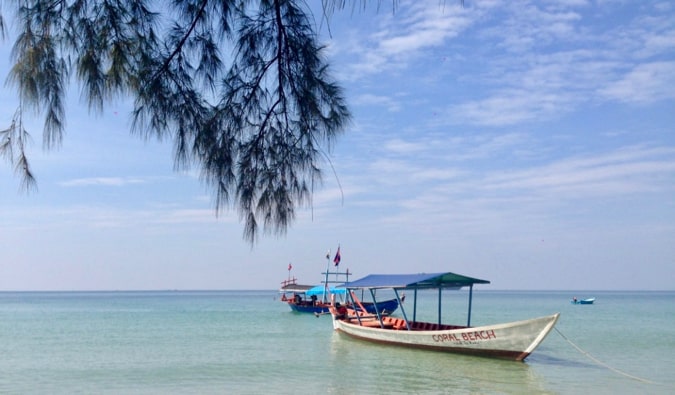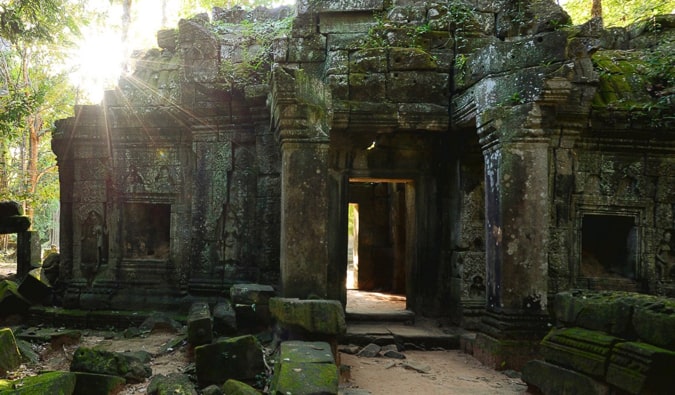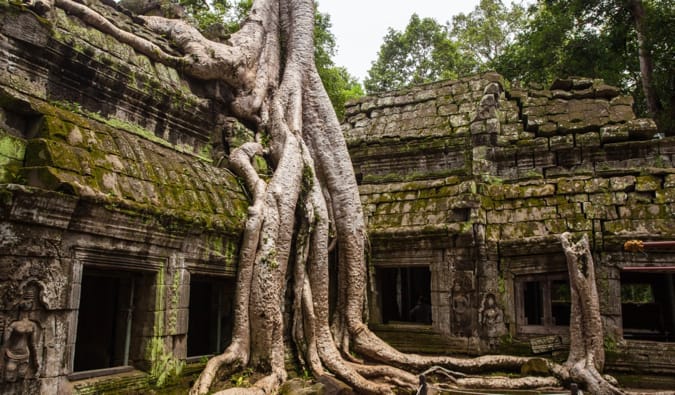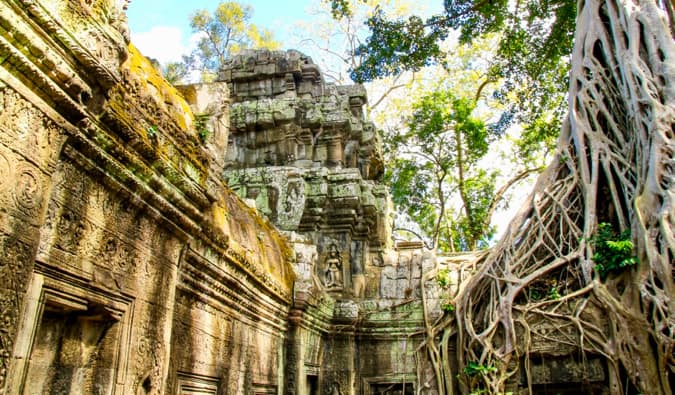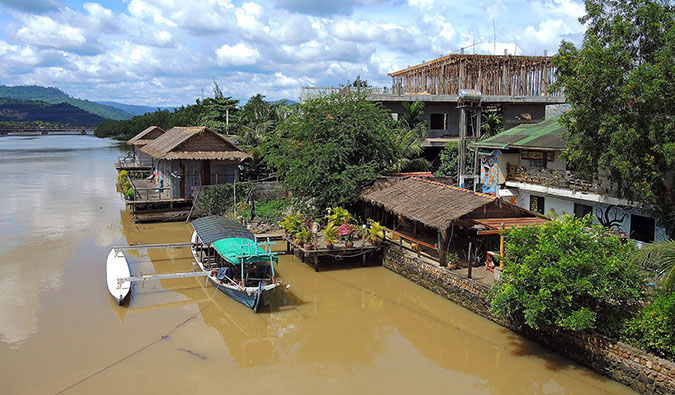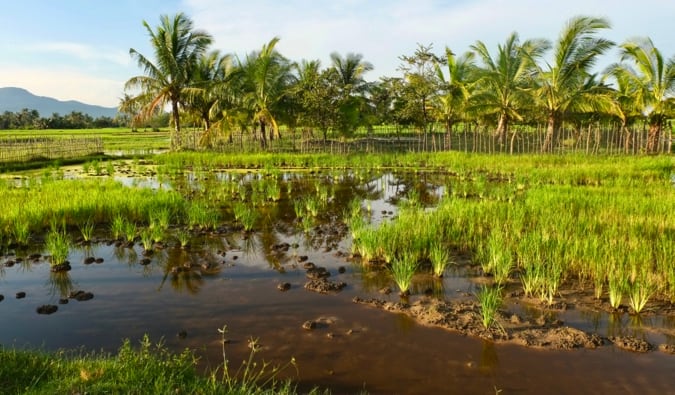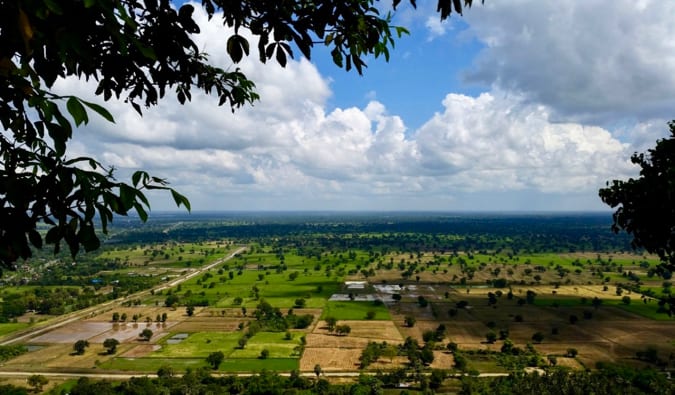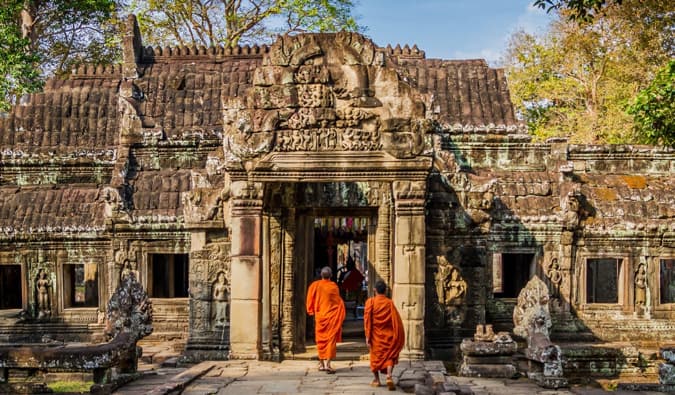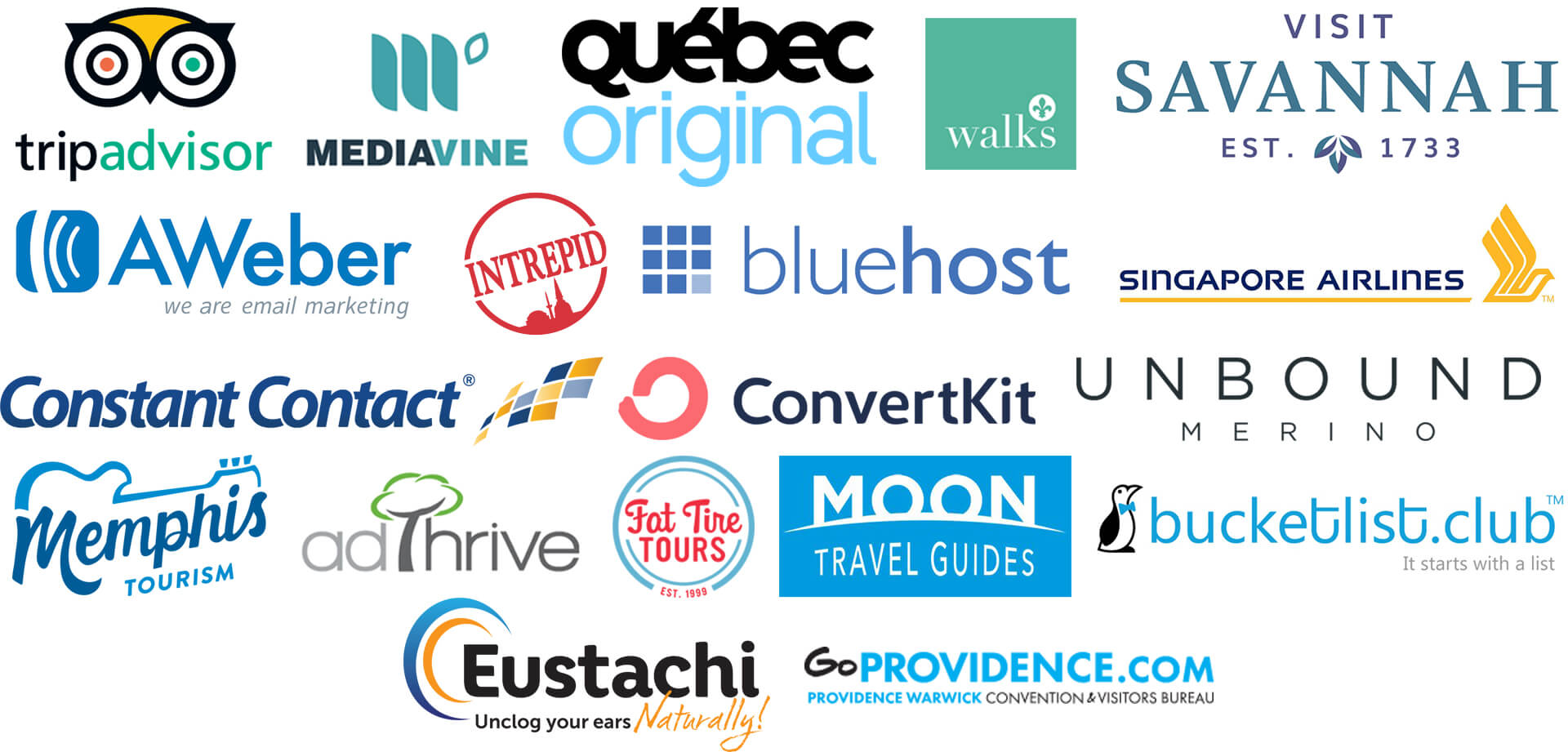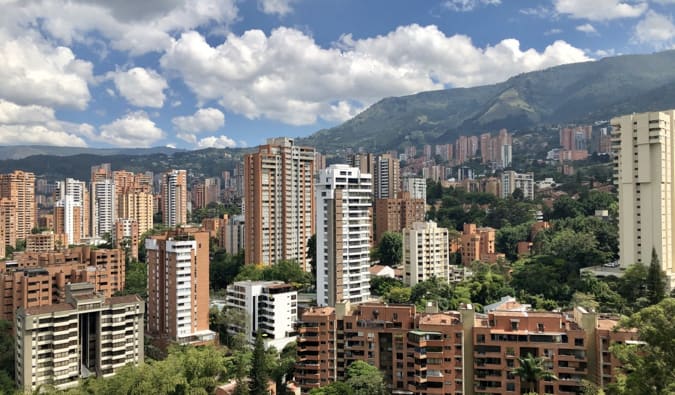
Posted: 5/13/2019 | May 13th, 2019
Surrounded by the Pacific and Atlantic Oceans, Central America is a magical region that is perfect for backpacking. The area is full of rainforests, unexplored Mayan ruins, gorgeous beaches, incredible reefs, cheap prices, delicious food, and warm welcoming people.
Though it is not expensive, it is often confusing to arrange your own transportation throughout the region.
So, in this post, I’ll provide some helpful hints on getting around Central America. Here’s how you can travel around Central America cheaply – no matter how long you’ll be there.
Table of Contents
Getting Around Cheap By Bus

Buses are the main form of transportation you’ll use to get around Central America. In fact, it’s about the only way to get around Central America as there are no train lines and regional flights are expensive. You’re going to take buses most of your trip.
There are several different kinds of buses in the region.
The most comfortable are the international buses that run between the larger cities and tend to have their own bus terminals. They have set, reliable schedules and are best for long distances. They make traveling easy and even take care of the hassles at border crossings. The companies you use might vary by country, but a few of the larger services include:
On Tica Bus, for example, you can get from Panama all the way to Antigua in Guatemala for $136 USD (a 32-hour journey). From Panama to Costa Rica is about $55 USD (a 16-hour journey).
The routes are often straightforward, the buses are air-conditioned, there’s a bathroom on board, and the seats recline. Some companies (like Tica) will also have partnerships with local hotels/hostels so that you get dropped off right at the door rather than having to find your way at 2am upon arrival.
While most of these bus services have websites, they’re often extremely buggy and difficult to use. To compare routes and prices, you can research your journey on Rome2Rio.com before either booking on the bus company’s website or simply showing up at the terminal to purchase your ticket.
For short distances, you have the “collectivo.” This short-distance minivan service is super cheap, but often very crowded. You’ll usually find them at bus terminals, so it’s worth checking with the drivers to see where they’re going.
Finally, there is the local chicken bus. These colorfully painted vehicles were formerly U.S. school buses. They are called “chicken buses” because they also transport chickens and rice, thus have a lot of chickens on them. It’s a nickname that has stuck among travelers. They stop just about everywhere to let people hop on and off. They are a cramped but fun and interesting way to get around places. I always end up meeting intereting folks.
Here are some sample fares for express bus routes in Central America (in USD):
- Belize City to Flores – $25 (5 hrs)
- Flores to Guatemala City – $28 (8 hrs)
- Guatemala City to San Salvador – $22 (6 hrs)
- San Salvador to Tegucigalpa – $15 (7 hrs)
- Tegucigalpa to Managua – $30 (6 hrs)
- Managua to San Jose – $25 (8 hrs)
- San Jose to Panama City – $55 (16 hrs)
- San Salvador to Antigua – $19 (6 hrs)
- Bocas Del Toro to Boquete – $37 (6 hrs 48 mins)
- San Jose to Tamarindo – $8 (5 hrs 30 mins)
- San Jose to Boquete – $13 (8 hrs)
Getting Around Cheap By Flying

Flying isn’t the cheapest way to see Central America (and routes are really limited). San Salvador and San Jose are the most popular hubs, so you may be able to find decent prices to/from these cities.
But then you always have to connect and that’s a pain. Here are some sample flight times and prices (which are really high because the region just doesn’t have that many cheap flights):
Guatemala City to Belize City – Flight time: 1 hr 15 min.
TAG 358 USD (one way), 501 USD (return)
Avianca 284 USD (one way), 299 USD (return)
Guatemala City to San Salvador – Flight time: 35 min.
TAG 200 USD (one way), 347 USD (return)
Avianca 357 USD (one way), 459 USD (return)
Flores to Guatemala City – Flight time: 1 hr
TAG 125 USD (one way), 220 (return)
Avianca – 136 (one way), 218 (return)
Managua to Panama City – Flight time: 1 hr 35 min.
COPA 332 USD (one way), 481 USD (return)
Spirit** 226 USD (one way), 379 USD (return)
San Jose to Panama City – Flight time: 1 hr 45 min.
Volaris Costa Rica 91 USD (one way), 164 (return)
COPA 376 USD (one way), 196 USD (return)
Managua to Guatemala City – Flight time: 1 hr 23 min.
COPA 347 USD (one way), 317 USD (return)
Avianca 348 USD (one way), 528 USD return
San Jose to Panama City – Flight time: 1 hr 20 min.
COPA 150 USD (one way), 312 USD (return)
Avianca 151 USD (one way), 260 USD (return)
Tegucigalpa to San Jose – Flight time: 4 hr 10 min
COPA 357 USD (one way), 355 USD (return)
Avianca 357 USD (one way), 355 USD (return)
San Pedro Sula to San Salvador – Flight time: 50 min.
Avianca 356 USD (one way), 525 (return)
San Pedro Sula to Managua – Flight: 3 h4 15 min.
Avianca 405 USD (one way), 515 USD (round trip)
**Extremely long flights due to layovers
Note: If you book early, you can save on fares. Fares also vary depending on the time of year.
There’s the local Nature Air in Costa Rica, which has fairly inexpensive flights around the country. I’ve flown them a couple of times but I’m not really a fan. They have a mixed safety record and I always feel like flying them is a bit of gamble.
Getting Around Cheap By Car

Renting a car and driving around Central America on your own is not a good idea. For one, rental cars are much more expensive than the public transit options.
That said, if you come down here with a car, I would say go for it. Lots of people drive through the region with a car or van they bought elsewhere. It’s totally doable. I just wouldn’t rent a car to do it in the region.
Getting Around Cheap By Backpacker Bus

Bamba Experience is a backpacker bus company that serves Central America (among other regions). Bamba has a fleet of hop-on-hop-off buses that travel set routes throughout the region, making it easy to get around and explore if you’re looking for a simple tranportation option.
As with all pre-arranged tours, there is much less flexibility with this choice as you’re going on their schedule (though they will always be back if you want to stay somewhere longer). That being said, you can meet a lot of really cool fellow backpackers with this option. They also organize tours and excursions, too.
Personally, these buses are just not my thing. By doing it yourself, you’ll have more flexibility and save money. Want to meet people? Just learn to say “hi” to strangers on buses!
Getting Around Cheap By Boat

If you want to visit islands or coastal towns, boats and ferries are options to consider.
In Belize, ferries to the islands are typically $15-20 USD. You can reach Honduras’ Bay Islands (including Roatan) by ferry, and you’ll definitely want to take a boat trip if you’re heading to the Corn Islands.
If you are traveling from Belize to Guatemala, there’s a water taxi from Punta Gorda to Puerto Barrios. And there’s a service from Belize (Placencia or Belize City) to Honduras (Puerto Cortes).
Here are some sample ferry fares:
- Belize City to Ambergris Caye – From $15 USD (one way), $25 USD (round trip)
- Belize City to Caye Caulker – From $23 USD (one way), $35 USD (round trip)
- Between Ambergris Caye & Caye Caulker – From $15 USD (one way), $25 USD (round trip)
- La Ceiba to Roatan – $33 USD (one way), $65 USD (round trip)
- Punta Gorda to Puerto Barrios – $25 USD (each way)
- Placencia to Puerto Cortes – $60 USD (each way)
For short journeys (like between the Corn Islands or to various towns on Lake Atitlan), it’s easiest to just show up and hire a boat or water taxi to take you across. Prices are usually negotiable this way.
Getting Around Cheap By Train
There are no trains in Central America. It’s not an option!
How Long Does It Take to Get Around Central America?

Getting around Central America can definitely be a bit tedious from time to time. Buses can be slow and don’t always depart or arrive on time. They will often wait until they are full and stop and pick up people on the way or for rest breaks.
But, to help you plan, here is a distance and time chart so you know (roughly) how long it takes to get from place to place in Central America:
– Belize City
– San Salvador
Guatemala City
*No direct flights.
Central America is such an amazing place – though getting aroudn the region will take some planning and research.
Things won’t always go smoothly. Getting from place to place here can sometimes be a hassle. But with a little preparation and a pinch of patience, you’ll be able to have an amazing experience.
Be flexible with your schedule. Make sure you plan ahead. Do that, and you’ll be able to enjoy this incredible region of the world!
Book Your Trip to Central America: Logistical Tips and Tricks
Book Your Flight
Find a cheap flight by using Skyscanner or Momondo. They are my two favorite search engines because they search websites and airlines around the globe so you always know no stone is left unturned.
Book Your Accommodation
To find the best budget accommodation, use Booking.com as they consistently return the cheapest rates for guesthouses and cheap hotels. You can book your hostel with Hostelworld as they have the most comprehensive inventory. Some of my favorite places to stay in Costa Rica:
- Dirty McNasty (Caye Caulker, Belize) – This is one of the biggest hostels in the country and a hub for party-goers. If you’re looking to let loose, this is the hostel for you!
- Rocking J’s (Puerto Viejo, Costa Rica) – This an institution in Central America. The hostel has been there for ages and there’s a beautiful white sand beach in front of it. They have nightly BBQs.
- The Naken Tiger (San Juan del Sur, Nicaragua) – Located in San Juan del Sur, the Naked Tiger is an incredible property nestled a bit far out of town but on top of a hill with a beautiful view of the entire area.
Don’t Forget Travel Insurance
Travel insurance will protect you against illness, injury, theft, and cancellations. It’s comprehensive protection in case anything goes wrong. I never go on a trip without it as I’ve had to use it many times in the past. I’ve been using World Nomads for ten years. My favorite companies that offer the best service and value are:
- World Nomads (for everyone below 70)
- Insure My Trip (for those over 70)
Looking for the best companies to save money with?
Check out my resource page for the best companies to use when you travel! I list all the ones I use to save money when I travel – and I think will help you too!
Want More Information on Central America?
Be sure to visit our robust destination guide on Central America for even more planning tips!
The post How to Get Around Central America on a Budget appeared first on Nomadic Matt's Travel Site.

